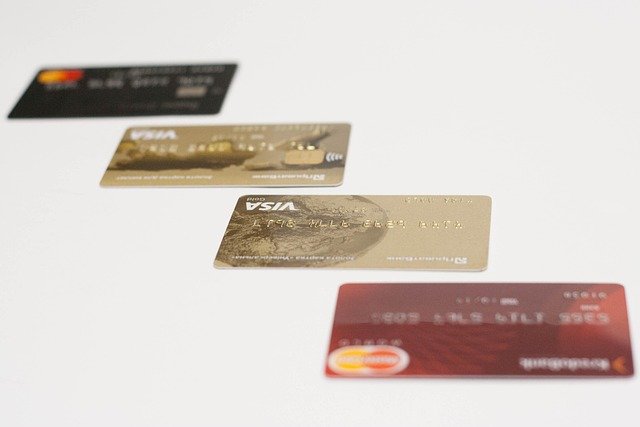Important Considerations When Choosing a Credit Card in Italy
Individuals seeking a credit card in Italy should be informed about several key factors before submitting an application. It is essential to understand the various fees associated with credit cards, the rewards programs they offer, and the eligibility criteria for different card types. This information can help align credit card choices with specific financial needs.

Italy’s credit card market offers diverse options, each with unique features, benefits, and requirements. Making the right choice requires understanding key factors that affect both your immediate costs and long-term financial goals. Whether you’re a resident, expatriate, or frequent visitor to Italy, selecting an appropriate credit card involves evaluating several critical aspects that can impact your overall banking experience.
Understanding Credit Card Fees and Charges
Credit card fees represent one of the most significant factors affecting the total cost of card ownership. Italian credit cards typically include annual fees ranging from €20 to €300, depending on the card type and benefits offered. Transaction fees for foreign purchases usually range between 1.5% and 3%, while cash advance fees can reach 3-5% of the withdrawn amount.
Interest rates on outstanding balances vary considerably across providers, with standard rates typically falling between 12% and 24% annually. Some cards offer promotional periods with reduced or zero interest rates for balance transfers or new purchases. Additionally, late payment fees generally range from €15 to €35, making timely payments crucial for cost management.
Overlimit fees, charged when spending exceeds your credit limit, can add €20-40 to your monthly statement. Understanding these various charges helps you calculate the true cost of credit card ownership and compare different options effectively.
Evaluating Rewards Programs and Benefits
Rewards programs significantly differentiate credit cards in the Italian market, offering various ways to earn value from your spending. Cashback programs typically provide 0.5% to 2% returns on purchases, with some cards offering higher rates for specific categories like groceries, fuel, or online shopping.
Points-based systems allow cardholders to accumulate rewards that can be redeemed for merchandise, travel, or statement credits. Premium cards often include travel benefits such as airport lounge access, travel insurance, and hotel upgrades, which can provide substantial value for frequent travelers.
Many Italian credit cards partner with local retailers, restaurants, and service providers to offer exclusive discounts and special offers. Some cards provide purchase protection, extended warranties, and fraud protection services that add significant value beyond the basic payment functionality.
Eligibility Criteria for Different Credit Card Types
Credit card eligibility in Italy depends on several factors, with income requirements varying significantly across card types. Basic cards typically require minimum monthly income of €800-1,200, while premium cards may require €2,500-5,000 or higher. Employment status plays a crucial role, with permanent employees generally having easier approval processes than freelancers or temporary workers.
Age requirements typically range from 18 to 75 years, though some premium cards may have more restrictive age limits. Residency status affects eligibility, with Italian residents having access to more options than non-residents. Credit history evaluation considers existing debts, payment history, and overall financial stability.
Documentation requirements usually include proof of income, employment verification, tax returns, and identification documents. Some banks require existing relationships or minimum account balances to qualify for certain credit card products.
| Provider | Card Type | Annual Fee | Cashback Rate | Income Requirement |
|---|---|---|---|---|
| UniCredit | Classic | €35 | 0.5% | €1,000/month |
| Intesa Sanpaolo | Gold | €80 | 1.0% | €1,500/month |
| Banco BPM | Premium | €150 | 1.5% | €2,500/month |
| Mediolanum | Platinum | €200 | 2.0% | €3,000/month |
| Fineco | Standard | €25 | 0.75% | €800/month |
Prices, rates, or cost estimates mentioned in this article are based on the latest available information but may change over time. Independent research is advised before making financial decisions.
Additional Considerations for Italian Credit Cards
Beyond the primary factors, several additional considerations can influence your credit card choice. Customer service quality varies among providers, with some offering 24/7 support while others maintain limited hours. Digital banking capabilities, including mobile apps and online account management, have become increasingly important for modern cardholders.
Acceptance networks differ between cards, with Visa and Mastercard offering broader international acceptance compared to domestic networks. Some cards provide better exchange rates for foreign transactions, making them more suitable for international travelers or online shoppers purchasing from foreign websites.
Security features such as chip technology, contactless payments, and fraud monitoring systems vary across providers. Some cards offer temporary virtual numbers for online shopping or the ability to lock and unlock cards instantly through mobile applications.
Making Your Final Decision
Choosing the right credit card requires balancing your spending patterns, financial goals, and personal preferences. Consider your typical monthly spending, preferred reward types, and likelihood of carrying balances when evaluating options. Calculate the total annual cost including fees and potential interest charges to determine the most cost-effective choice.
Review the terms and conditions carefully, paying attention to interest rate changes, fee structures, and reward program limitations. Consider starting with a basic card to establish credit history before upgrading to premium options with higher fees and requirements.
Regular evaluation of your credit card choice ensures it continues meeting your evolving financial needs and spending patterns.




